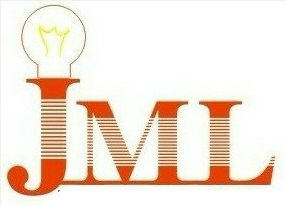HOME >> 業界ダイナミクス
How to develop Russian market
Mercury Lamps: Dangerous Light In The End Of Tunnel

Using incandescent lamps will be prohibited in Russia in 2014. It is planned to replace them with economical but hazardous gas-discharge lights. There are, however, no plants in the country which could recycle mercury lamps. Unconcerned Russians just chuck them to disposal sites. Energy saving may turn into environmental disaster. Experts surveyed by RusBusinessNews suggest the use of light emitting diode lamps instead of the gas-discharge type. The huge energy savings will enable avoiding having to spend money on the restoration of the destroyed Sayano-Shushenskaya hydropower station. The specialists are not sure, however if this scenario would be acceptable for the Russian elite.
The Russian Nationwide Science and Research Institute for Light Sources claims that about 110 billion kilowatt-hours is used on lighting in Russia which is about 15% of the total energy consumption. According to the same source, in the country as a whole there are 2 billion lamps used for lighting of industrial and auxiliary premises. A little less than a half of these are incandescent lamps which turn only 4% of the energy consumed into light.
Luminescent (gas discharge) lamps are five times more efficient than incandescent lamps. Specialists from the Group of Electrotechnical Companies "Electra" Ltd have calculated that with their assistance dwellers of a statistically average flat will save about 2000 roubles per year on lighting. Russians, however, prefer lighting homes the way they are used to, the share of luminescent lamps in the lamps sales structure is only about 5%.
The prohibition of use of incandescent lamps does not motivate Russian plants to make a transition to the production of gas discharge lamps. Serghey Chapayev, the Commercial Director of the Trading House of the Saransk Electric Bulb Plant Ltd says that the plant is not planning to establish any capacities for the production of energy saving bulbs. There is a tradition all over the world - the manufacturer does the recycling as well. This would mean that the Saransk plant will have to purchase the equipment to manufacture and recycle mercury lamps which would require millions of dollars. Russians have no money. This is probably why there is only one plant making energy saving bulbs in the country; this is the Smolensk plant which is a part of Germany's OSRAM.
The lion's share of luminescent light sources comes to Russia from China. Most of them are discarded into disposal sites since there is no plant capable of recycling mercury lamps in the country, according to the expert. The mass usage of these lamps in the current state of the Russian culture may cause serious environmental problems.
Gas discharge light sources have some other disadvantages - when turned on they take the high load off the electric lines, the top brightness is reached only some minutes later, they distort colours, and cause eye tiredness by the regular flicker. Specialists do not recommend the use of these sources in children's rooms and in table lamps since, to top it all, mercury lamps produce IR and UV light too.
The inevitable costs to environment and healthcare compelled Vladimir Taskayev, a Member of the RF State Duma, to start doubting the savings effect of the implementation of energy saving bulbs. The leader of the Sverdlovsk Liberal Democrats is planning to study in detail the financial aspect of the State project.
Vladimir Begalov, the acting Director of the Institute of Energy Saving (Ekaterinburg), agrees that there are problems with mercury lamps but they can all be resolved. In his opinion not only the use of incandescent bulbs must be banned, but the recycling procedure for mercury light sources must be developed and persons responsible for their collection must be appointed.
The expert does not advice to stop using incandescent bulbs in living rooms, neither does he recommend buying them by a box load. In five years time, he reckons, the world will make the transition to LED lamps which are more economical and safer. Russia could just bypass the luminescent lamp era, starting to produce the light sources fit for the future.
LED streetlights and traffic lights are already made in Russia. The State owned corporation Rosnano, established in 2007, has included this into the list of priorities. Having signed a contract with the Urals Optical and Mechanical Plant it has pledged to fund the establishment of production capacities for the future. The activities of the corporation, however, have received a lot of criticism from the market players and from law enforcement agencies.
The entrepreneurs are unhappy that the structure headed by Anatoly Chubais is funding the production of lamps made with the use of American LEDs while there are LEDs made in Russia and experts claim them to be quite original.
On the basis of own LEDs the Chelyabinsk enterprise Rosnanosvet Ltd makes 1,500 lamps a month which are twenty times more efficient and last fifty times longer than incandescent bulbs, the lifecycle of which amounts to 1000 hours, Gheorghiy Baumshtein, the Director of the Ekaterinburg Representation of the plant stated.
In 3-4 months the company is planning to develop the production of household bulbs and, having started the new lines to increase the production to 30 thousand. This, of course, is a drop in the ocean, considering the demand of hundreds of millions for streetlights. The Chelyabinsk company cannot make any more, partly due to the fact that the cost of a lamp varies from 6 to 20 thousand of roubles, and partly due to the lack of money. Rosnanosvet develops exclusively with its own money. And this is happening at a time when the State has allocated 130 billion roubles for the development of nanotechnologies.
The RF Prosecutor General's Office's inspection has revealed that the State Corporation Rosnano has spent just 10 billion roubles on the cutting edge technologies, a half out of which - to cover own overheads. Out of the 36 projects approved by the review board only eight are being funded. Most of the money allocated by the State is in bank deposits, so just working for itself.
The available cash, in experts' opinion, could have been spent of purchasing lines for the production of these new lamps. The Chelyabinsk plant is prepared to supply LEDs for the new enterprises. The significant increase of the production would, in about five years time, reduce the prices of LED lamps which now are by an order of magnitude more expensive than luminescent lamps, claims Vladimir Begalov. The specialists have calculated that the replacement of 4.5 million lamps per year in ten years time would save 2 GW of installed power. In other words Russia would not need eighteen gas turbine power plants 110 MW each.
However, the Russian economy develops according to its own laws. The Urals Optical and Mechanical Plant that was offered the Rosnanosvet's LEDs has not managed to see any profit in this. Other LED lamp makers also prefer buying the key lamp component abroad. The money allocated for the development of innovative production capacities ended up being managed by banks which offer loans to manufacturing industries at 24% of annual interest. The State, at the same time, is trying to find tens of billions of roubles for the restoration of the Sayano-Shushenskaya hydropower station.
Vladimir Begalov is concerned that Russia yet again will miss the moment and that officials would drown the mass production of LED lamps in endless talks and negotiations. And when 2014 comes the first available solution will have to be grabbed and used. Russia will be overflowed by outdated but, on the other hand, cheap mercury lamps. And it will be too late to think about what to do with them once their service life is over.
Jacky
 English
English 中文版
中文版 日本語
日本語

 , Jieming Optoelectronic Co., Ltd. All Rights Reserved
, Jieming Optoelectronic Co., Ltd. All Rights Reserved